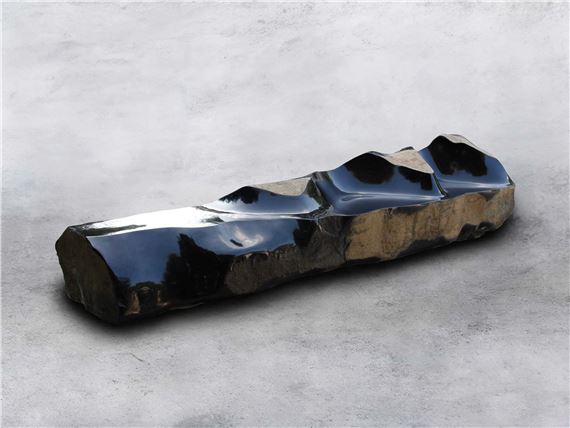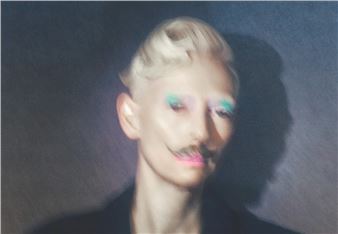Byung Hoon Choi: Voice of Silence
Friedman Benda is pleased to announce Voice of Silence, the fourth solo exhibition by Korean artist and master craftsman Byung Hoon Choi, opening on March 27th. Renowned for his work that draws on Zen Buddhist and Taoist philosophies of balance, as well as Korean Dolmen from the Archaic period, Choi now presents a new body of work that deepens his explorations of stillness and silence.
Merging traditional Korean craftsmanship with contemporary design, Choi uses stone and wood to seek a form of realism that excludes artificiality and embraces natural beauty. The exhibition will feature new wooden works inspired by the classical scholar ethos of the Joseon Dynasty. Shown for the first time outside of Korea, these cabinets pay homage to ChoiвҖҷs Korean cultural heritage, particularly its emphasis on natural beauty and minimal design. By using wood and natural stone bases to evoke shapes and patterns found in nature, he offers a contemplative vision of the quiet grace and unadorned beauty of the natural world.
The basalt works embody a compelling dialogue between the ancient, weathered surface of the stoneвҖ”formed millions of years agoвҖ”and the contemporary polish brought by the artistвҖҷs hand. Describing these pieces as вҖңsilent messages,вҖқ Choi views them as a meditation on both the physical properties of the stone and the geological evolution of Earth itself. His ongoing use of the title Afterimage of Beginning reflects this concept. As he states, вҖңstone is a lingering afterimage of the origin,вҖқ and these works invite the viewer to pause, contemplate, and experience a moment of stillness within the vastness of existence.
вҖңThe materials I use, whether itвҖҷs the cool hardness of basalt or the warmth of wood, each carries its own history and energy,вҖқ Choi explains. вҖңMy process is about finding harmony in their contrasts and celebrating the quiet beauty that emerges from these natural forms.вҖқ These new works are grounded in the raw, elemental qualities of natural materials; highlighting natureвҖҷs inherent beauty and finding their balance through the artistвҖҷs intervention.
A reflection of ChoiвҖҷs personal philosophy of harmonyвҖ”a вҖңmiddle-way,вҖқ as he calls itвҖ”, these works seek balance and evoke a sense of stillness and silence. It is through a culturally and philosophically rich understanding of beauty that Byung Hoon Choi masterfully accomplishes the seemingly impossible: giving silence a distinct voice.

Recommended for you
Friedman Benda is pleased to announce Voice of Silence, the fourth solo exhibition by Korean artist and master craftsman Byung Hoon Choi, opening on March 27th. Renowned for his work that draws on Zen Buddhist and Taoist philosophies of balance, as well as Korean Dolmen from the Archaic period, Choi now presents a new body of work that deepens his explorations of stillness and silence.
Merging traditional Korean craftsmanship with contemporary design, Choi uses stone and wood to seek a form of realism that excludes artificiality and embraces natural beauty. The exhibition will feature new wooden works inspired by the classical scholar ethos of the Joseon Dynasty. Shown for the first time outside of Korea, these cabinets pay homage to ChoiвҖҷs Korean cultural heritage, particularly its emphasis on natural beauty and minimal design. By using wood and natural stone bases to evoke shapes and patterns found in nature, he offers a contemplative vision of the quiet grace and unadorned beauty of the natural world.
The basalt works embody a compelling dialogue between the ancient, weathered surface of the stoneвҖ”formed millions of years agoвҖ”and the contemporary polish brought by the artistвҖҷs hand. Describing these pieces as вҖңsilent messages,вҖқ Choi views them as a meditation on both the physical properties of the stone and the geological evolution of Earth itself. His ongoing use of the title Afterimage of Beginning reflects this concept. As he states, вҖңstone is a lingering afterimage of the origin,вҖқ and these works invite the viewer to pause, contemplate, and experience a moment of stillness within the vastness of existence.
вҖңThe materials I use, whether itвҖҷs the cool hardness of basalt or the warmth of wood, each carries its own history and energy,вҖқ Choi explains. вҖңMy process is about finding harmony in their contrasts and celebrating the quiet beauty that emerges from these natural forms.вҖқ These new works are grounded in the raw, elemental qualities of natural materials; highlighting natureвҖҷs inherent beauty and finding their balance through the artistвҖҷs intervention.
A reflection of ChoiвҖҷs personal philosophy of harmonyвҖ”a вҖңmiddle-way,вҖқ as he calls itвҖ”, these works seek balance and evoke a sense of stillness and silence. It is through a culturally and philosophically rich understanding of beauty that Byung Hoon Choi masterfully accomplishes the seemingly impossible: giving silence a distinct voice.

 ARTISTS
ARTISTS











